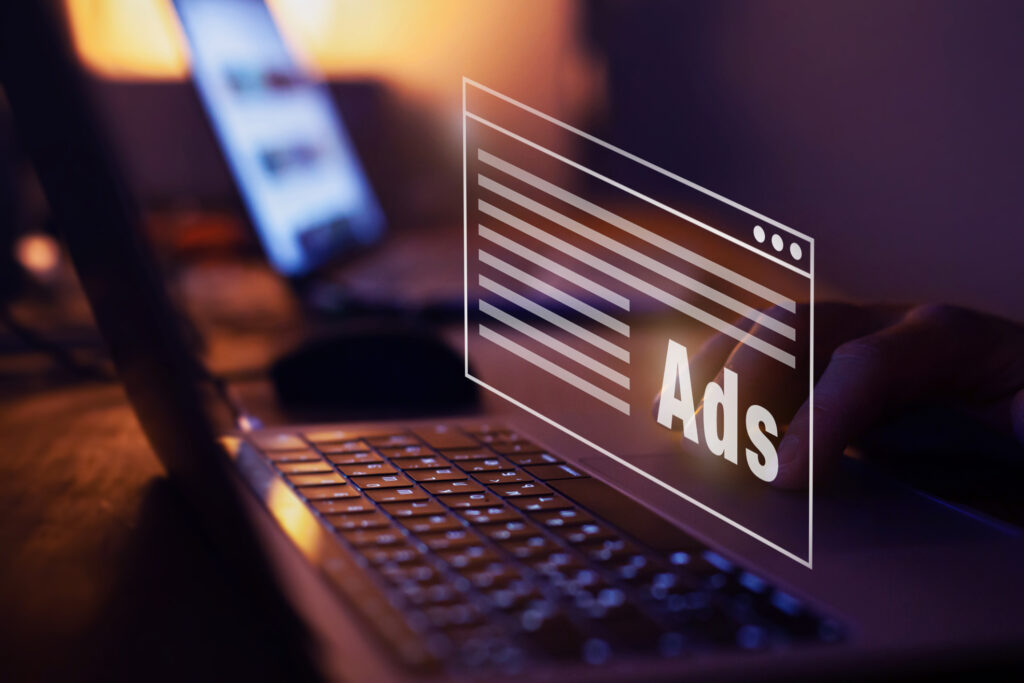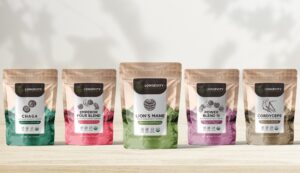On a marketplace as Amazon, where competition is fierce, strategic advertising can make all the difference. As a dedicated DTC brand owner or seller, being an expert in the art of Pay-Per-Click (PPC) automation strategies is essential for “recontouring” your business to new heights. In this post, we’ll delve into the realm of PPC automation, equipping you with actionable insights and examples to drive exceptional results on the Amazon marketplace.
What is PPC?
Pay-Per-Click (PPC) is a digital advertising model in which advertisers pay a fee each time their ad is clicked. It’s an auction-based system where brands bid on keywords to display their ads prominently when users search for specific terms. On Amazon, PPC campaigns showcase your products or brand in strategic locations within the Amazon marketplace, increasing visibility, awareness and potential sales.
Why is PPC automation strategies important for Amazon brand management?
Statistics speak volumes about the impact of PPC advertising on brand visibility, growth, and sales within the Amazon marketplace:
- According to eMarketer, Amazon’s US net ad revenues are projected to reach $39.45 billion in 2023, highlighting the rapid growth of Amazon’s advertising ecosystem.
- A survey by Jungle Scout found that 67% of Amazon sellers reported using Amazon PPC ads to drive sales and rank their products higher.
PPC metrics
But, before diving into the world of PPC automation, let’s familiarize with the metrics that guide your campaigns’ performance and effectiveness:
- Click-Through Rate (CTR). CTR measures the percentage of users who clicked on your ad after seeing it. A higher CTR indicates that your ad is relevant and compelling to your target audience. Take into account that anything higher than 0.4% is considered a good CTR.
- Conversion Rate. Conversion rate tracks the percentage of users who clicked on your ad and completed a desired action, such as making a purchase. A higher conversion rate signifies the efficiency of your ad in driving actual sales. For Recontour’s portfolio, we consider a good CVR to be 10% or above.
- Average Cost-Per-Click (CPC). The average cost-per-click is the amount you pay when someone clicks on your ad. Monitoring CPC helps you manage your budget effectively and optimize your bid strategy.
- Return on Ad Spend (ROAS). ROAS measures the revenue generated for every dollar spent on advertising. A higher ROAS indicates more effective campaigns in terms of revenue generation. For Recontour, we consider a good ROAS to be 3 or higher.
- ACoS (Advertising Cost of Sale). ACoS calculates the percentage of your total ad spend against the revenue generated from the ads. A lower ACoS is desirable, as it means your advertising is cost-efficient. ACoS and ROAS, see above, are related metrics. ROAS is the reverse of ACoS and vice-versa. (e.g. ROAS 4 is an ACoS of 25%). What’s a solid ACoS goal? Optimal ACoS for Recontour typically stays under 30%, but its range varies with your brand’s lifecycle and SKU. Amazon’s algorithm learns and campaign optimization improves over time, potentially causing higher initial ACOS that eventually stabilizes below 30%.
- TACoS (Total Advertising Cost of Sales). It’s our go-to metric for gauging PPC performance. TACoS is more about the financial impact of PPC efforts on your business equation than a ‘pure’ performance metric, like ACoS. It’s crucial to note that TACoS and ACoS go hand in hand, linked to sales objectives. Cutting PPC spending may lower TACoS, but could harm overall brand performance. Our TACoS goal at Recontour is to stay between 8% and 12%.
- Keyword Performance. Monitoring how specific keywords perform—impressions, clicks, conversions—helps you optimize your campaign by focusing on high-performing keywords.
- CLTV (Customer Lifetime Value). This indicator forecasts revenue from each acquired customer. It’s relevant for select niches, like those with repeat purchases or cross-selling potential. In certain categories, you might use CLTV to measure indicators instead of just revenues. Acquiring a customer’s value often exceeds a single sale, justifying higher initial investment.

How you can employ PPC automation
Now that we’ve covered the fundamental PPC metrics, let’s dive into how you can employ PPC automation to elevate your brand’s presence and growth on Amazon.
1. Decoding PPC automation: your business’s secret weapon
PPC automation is not just a buzzword; it’s a powerful initiative that can optimize your Amazon advertising campaigns efficiently. By utilizing automated processes, you can streamline tasks, save time, and focus on strategic decisions that elevate your business growth.
2. Selecting the right keywords and/or ASINs to target: A game-changing move
Keyword selection and/or ASINs targeting is the foundation of effective PPC campaigns. Utilize Amazon’s robust automated keyword targeting options to automatically match your ads with relevant search queries. This eliminates guesswork and ensures your products are visible to potential customers searching for exactly what you offer.
Example: If you’re selling premium running shoes, automatic targeting can match your ads to searches like “best running shoes” or “athletic footwear or your top competitors”.
3. Dynamic bidding strategies: Maximizing ROI
Leverage Amazon’s dynamic bidding strategies, such as “Dynamic Down Only” or “Fixed Bid,” to ensure your ad spend aligns with your goals. Automated bidding adjusts your bids in real-time based on data trends, driving higher conversion rates while keeping costs under control.
Example: If your objective is to maximize sales, dynamic bidding can automatically adjust your bids to secure higher visibility during peak shopping times.
However, in this scenario, it’s crucial to exercise caution and closely monitor the situation. During these critical moments, top keywords’ CPC can surge significantly. To avoid overspending, it’s wise to establish a spending limit and conduct regular checks to ensure your campaign’s effectiveness and cost-efficiency.
4. Implementing automatic campaigns for effortless reach
Automatic campaigns simplify the process of expanding your reach, allowing you to test relevant keywords that the system identifies for you, searching for the most profitable ones. These campaigns utilize AI to target relevant keywords and search terms, presenting your products to a broader audience without the hassle of manual keyword research. Make sure you do not include more than 10-15 keywords and that you separate the match type (broad, phrase) to make sure that your budget is not consumed fully by the broadest ones, not giving the possibility for all the keywords to get a chance.
Example: Launch an automatic campaign for your kitchen gadgets, allowing Amazon’s AI to identify and display your products in various relevant searches, from “kitchen accessories” to “cooking utensils”.
5. Manual campaigns.
Manual campaigns are a second-step to your PPC strategy, as you can apply the learnings that you got from the automated campaigns to a narrower set of keywords where you can really include only the top and most profitable performers. Always make sure you limit the number of keywords for each campaign and separate the match type.
6. Sponsored Products.
Sponsored Products allows sellers to strategically promote their individual products within Amazon’s search results and relevant product detail pages. Leveraging targeted keywords and optimized bids, sellers can effectively position their offerings in front of potential customers actively searching for similar products, thereby increasing the likelihood of conversions. With robust customization options and data-driven insights, Sponsored Products enables sellers to enhance their brand exposure, drive traffic, and optimize their advertising campaigns to maximize their return on investment (ROI) within the Amazon ecosystem.
7. Leveraging Sponsored Brands for brand visibility
Sponsored Brands is a powerful advertising format that increases brand visibility by showcasing your products alongside your logo or a video and custom headline. Opting for automated targeting to reach potential customers searching for related products, elevates your brand’s recognition and drives more traffic to your store. It’s an ad type that normally serves best for brand awareness or if you want to showcase a wider range or if you need to explain your product. It normally experiences lower CVR than Sponsor display or Sponsor products advertising, that is better integrated with the search-nature type of the platform.
Sponsored Brands is very useful if you sell a product that needs explanation (e.g. a new type of game) to be fully understood and for the message to be more compelling or if you offer a wide range of products within the same brand that can potentially stimulate multiple-purchase or cross-selling (e.g. a collection of shoes).
8. Harnessing the power of Amazon DSP
For a comprehensive approach to automation, consider Amazon Demand-Side Platform (DSP), previously known as Amazon Advertising Platform (AAP). This tool utilizes machine learning to target ads across Amazon and other digital platforms, ensuring your brand reaches the right audience at the right time. With Amazon DSP, you can programmatically purchase audio, video and display ad placements. Besides, you can do it on the Amazon ecosystem, which includes powerful platforms as Twitch or Kindle. Amazon DSP allows to build an audience on and off Amazon, so it is a valid alternative to Google and Meta ads, as it brings you customers to your Amazon store where expected conversion is higher.
Example: Launch a DSP campaign to target users who have shown interest in fitness gear, ensuring your sportswear products are displayed across various online touchpoints.
9. PPC Optimization.
PPC is an iterative effort, where you always need to test and learn, implement, and then repeat. Automation is a tool, but it always needs to be used carefully and we should try as much as possible to learn from it and to apply what we see and experience to improve it.
Example: Auto campaigns are a great way to test keywords, but you will always be directed by Amazon and go towards, at least in part, also their objectives, which may not necessarily be in line with yours. Make sure you monitor your PPC closely and, for instance, activate manual campaigns along with the automated ones, balancing your budget based on the KPIs we talked about before. Being data-driven with your PPC management and having clear objectives can save you a lot of wasted money, supporting your long-term success as a seller.
PPC automation is not only a time-saving solution but a strategic asset that empowers your DTC brand to thrive in the competitive Amazon landscape. By selecting the right keywords, embracing dynamic bidding strategies, utilizing automatic campaigns, and leveraging Sponsored Brands and Amazon DSP, you’re poised to achieve exceptional growth and drive sustainable success. Embrace the power of automation and witness your Amazon business ascend to new heights, reaching new peaks in the world of ecommerce.
RECONTOUR is an ecommerce aggregator company, born with the aim of transforming the world of e-commerce, focusing on growing consistently small-sized, high growth potential brands crafting long-term successful commerce stories.
Recontour team manages 6 brands and more than 85 SKUs and operates in more than 30 markets.
At Recontour, we are committed to create strong relationships with our sellers, employees, investors and customers.
For more information: visit www.recontour.io, follow us on @Recontour on LinkedIn.





